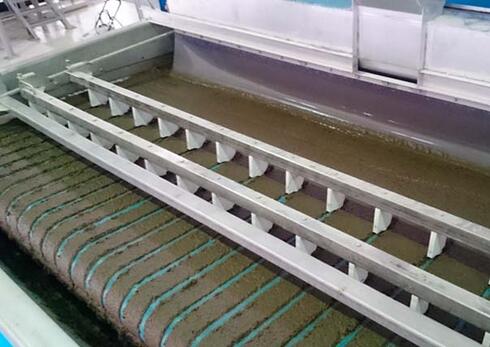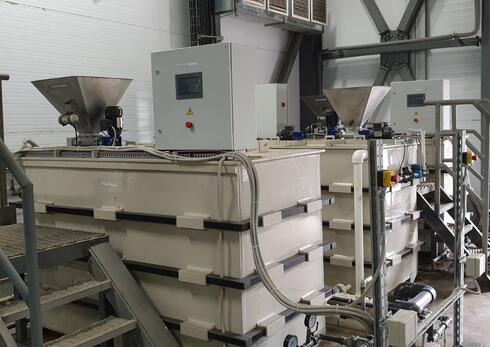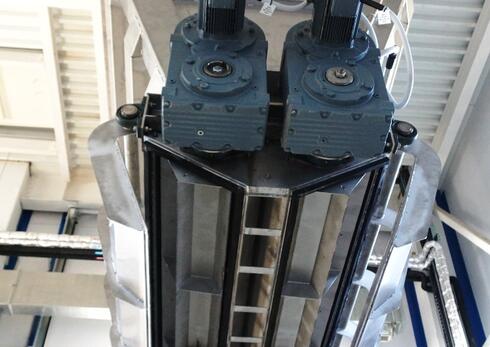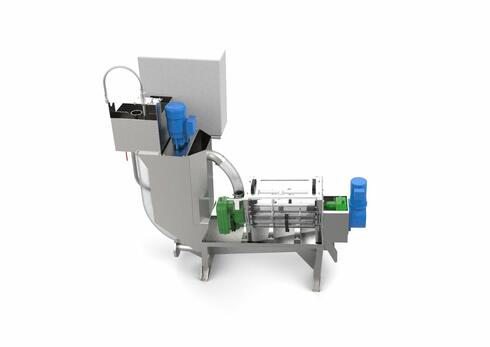Sludge treatment equipment
One of the most important points in wastewater treatment is disposal of the formed sludge – thickening, dehydration and subsequent possible treatment processes. The main aim of dewatering is to minimize the water content in the sludge most effectively. The choice of a suitable sludge dewatering method depends on the characteristics of the sludge to be dewatered, the available space and the requirements to the moisture content in the sludge for its final disposal.
For good dehydration, it is important to understand the moisture release capacity of the sludge. To improve the separation degree of water from the dry matter of the sludge, chemical reagents are used – flocculants, which increase the efficiency of dehydration. Flocculants can be in both liquid and dry state; for their use a solution of a certain (required) concentration is prepared with the help of a flocculant preparation station. To achieve the maximum effect of dehydration, coagulants can also be used – substances similar in their effect to flocculants.
The most common method of sludge dewatering is filtration. Filtration is the most widely used method in the treatment of sludge formed during wastewater treatment. Sludge passes through special filter cloths under pressure created by means of special mechanical shafts on special devices – filter presses. After this filtration, the moisture content of the sludge usually decreases from 98-99% to 75-80%, which reduces the sludge volume by 30 times! After dewatering, the sludge (cake) is stored in special bins, and then is transported by road for disposal or undergoes further processing and lowering of humidity.




